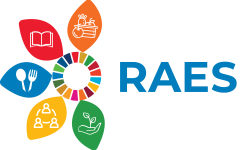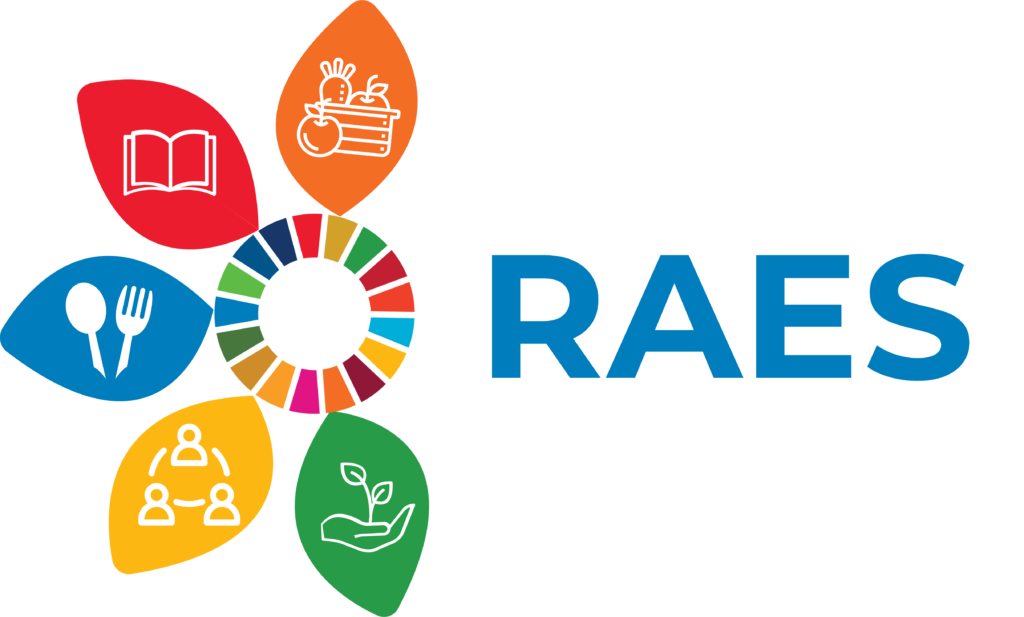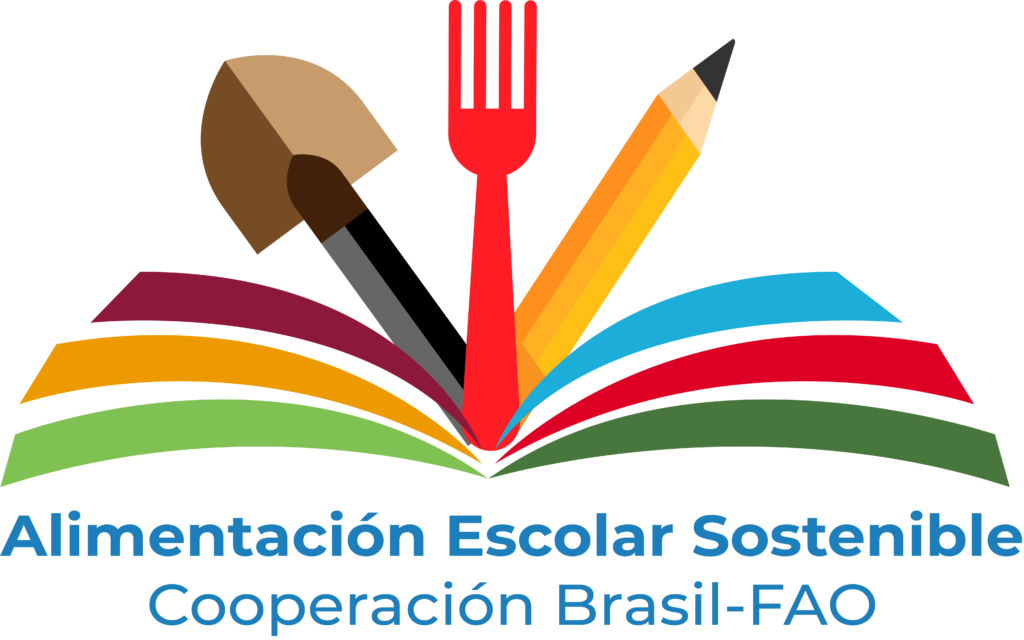Teacher Edison Eloy, from Guayaquil, exposes his experience with the Soloy doll and the educational activities that he develops for preschool students.
Paulo Beraldo
How to attract the attention of children in front of the computer during virtual classes? An opportunity arose from the difficulty: the creation of the character Soloy, a very nice doll imported directly from Belgium, who participates in classes with the 3-year-old students of the Carlos Monteverde Romero Fiscal Educational Unit, in Guayaquil, Ecuador.

In an interview with the RAES platform, Eloy highlights the importance of training teachers, raising awareness among families and working with students on food and nutrition education themes, so eating habits and healthy consumption are promoted in this and the next generations. The teacher values local food production, with cultural relevance, and the multiple possibilities of eating in a nutritious, adequate and economical way, with creativity.
How did the search for healthy eating and the idea of including activities about this topic in the daily life of the school start, and where did it come from?
Many years ago I realized the importance of a good nutrition. I have been a vegetarian for 25 years, I always take care of my diet, I eat fruits, vegetables and I like to eat healthy. I always eat with the children and I usually bring brown rice, salads, quinoa meat, as well as many fruits. There was a day when I was eating fruit, it was grapes, and a 3-year-old boy asked me: ‘Teacher, what are you eating? And I answered: ‘I am eating grapes’. And he asked me: ‘Who said to eat this?’ ‘My mom said, because they are very healthy and I have to eat healthy to be strong,’ I said. After a few days 17 students from 19 started eating grapes.
I was surprised. The moms came to me telling that the boys were asking for healthy food at home. Just to see me eating the fruits, they wanted too. So, a teacher is a role model for children. It was accidentally that I realized how they see everything you do, what you eat… All of this grew with a life experience, of eating healthy, of encouraging that and carrying it forward.
How was it done to include these activities in the curriculum?
Here we work with routines. First I receive them at school, we have a meal and some activities… But the pandemic changed everything. When it was virtual, it was a challenge for me, I didn’t know how to reach 3-year-old children, who don’t like to sit at the computer and don’t want to stay there. So, I decided to use Soloy for attention. I started teaching very specific topics, like washing hands, brushing teeth, dressing, colors, nutritious foods. They were very specific topics and short videos, which Soloy encouraged them to do what was asked. He started the class, saying hello to them, joking that teacher Eloy fell asleep… It has truly been a success in face-to-face and virtual classes. Soloy was developed from how to attract attention in virtual channels, because in person it is much easier.
How was the reaction and support of the school to this initiative?
Here in Ecuador there is a program called Educating the Family, which deals with themes such as non-violence and school support. It is a program divided into phases and one of them is promotion. I included Soloy there, not only with the children, they were all from the educational institution. Our school psychologist even had permission to share the material with other educational institutions. Everyone could see how we were promoting our educational programs and asking us to use Soloy. We also have a learning network to share experiences among teachers from different educational institutions and when our school had to share a developed program, Soloy’s experience was a choice. In general, when we returned to face-to-face classes, the directors, the psychologist, the educational community, everyone asked: ´Are you going to bring Soloy? ´ Today there are boys and girls who bring dolls to play with Soloy. Sometimes I carry him in a backpack and he says: ‘Get me out of here, get me out of here!’ And when I take him out, the children wanted to hug him, be with him, take care of him.
How can teachers be mobilized to discuss food and nutrition education actions increasingly in schools?
I have realized, with the experience I have had, that it is important to have a first meeting with parents or legal guardians. And I suggest that it needs to happen in the begin of the school year. One of the most important topics I focus on is nutrition. It is very important to keep in mind that in education, students should not learn only colors, mathematical formulas, country capitals or stories. It is a comprehensive development. But, for that, the teacher must be trained, know what a nutritious food is, what food is produced in his area, what is the nutritional value, how much does 1 kilo of a typical and healthy food cost, how much do vegetables cost, how you can replace sugar, chemicals, dyes. It is necessary to go to the market, to know the price of carrots, salad, bananas, honey and Stevia.
How can a good dialogue with families be proposed to achieve success in this task?
It is necessary to motivate fathers and mothers, and be an example, to eat fruits and vegetables. You have to be explicit and people will see. And I want to add that it is a process, this change is not overnight. A teacher must be very prepared on themes of law, nutrition, the damage caused by sugar, fried foods, chemicals, junk food. I t is important that parents know to understand what is the difference between the variety of foods. With all that, the family can be involved in the cause as well. I explain to the fathers and mothers that I want to see the child eating healthy food, I ask them to send healthy food, to motivate them and sometimes also put pressure on them.
Can you give some examples in the day-to-day life of the school that have changed?
For example, ban sweets or candy on parties why not offer healthy food and good nutrition for the holidays? It is also important to prohibit schools from offering soft drinks for students and to discipline parents regarding nutrition, encouraging the consumption of fruits of all kinds, the healthiest recipes. In addition to that, other teachers realize the benefits of this attitude and the entire educational community begins to offer more juices, vegetables, fruits. For a time I participated in a project of a foundation that cared for street children. There were two volunteers who, with the budget, went to the market and bought them sodas and cookies. When I entered, I commented that we could not continue like this. And I went to the wholesale market with this same little money and bought tangerines, oranges, greens and other fruits. After I left, the team kept going to the market checking healthy foods for good nutrition. In short: it is you who starts with a grain of sand. And the rest of the community will see what you do and will also love it. And the energy is contagious.
You have participated in the course ‘School feeding as an educational strategy for a healthy life’, developed by the Brazil-FAO Cooperation in 2021. Can you give an example of an activity that you have put into practice after that?
In the classes, the topic of the quality of food, fruits, vegetables, dyes, white sugar, salt caught my attention. I liked seeing how in this course there was a lot of talk about natural, fresh, healthy, local foods. It is essential to support regional and seasonal production, which can be much cheaper and more nutritious than processed foods. So it is important to take advantage of what is in our town, our area, our culture, our producers. Also the theme of the school garden as a pedagogical tool, the fact of having the help of experts, of technicians, to make it efficient, was very interesting.
Now I want to develop a project that basically deals with the whole preschool agreeing to implement the “Nutritive Lunch”, in commitment and collaboration with the families. Each week there will be a menu that families will make with some art, where the food will be sent in a way that represents something nice for the child, for example, rice with chicken, but served in the shape of a bear face, things like that.


